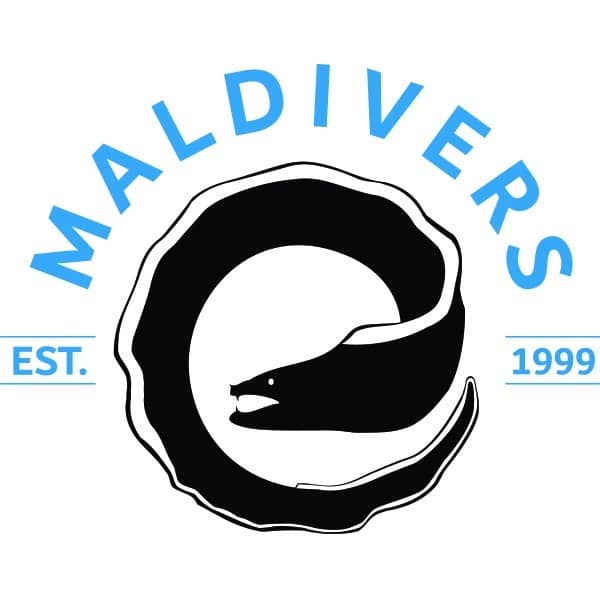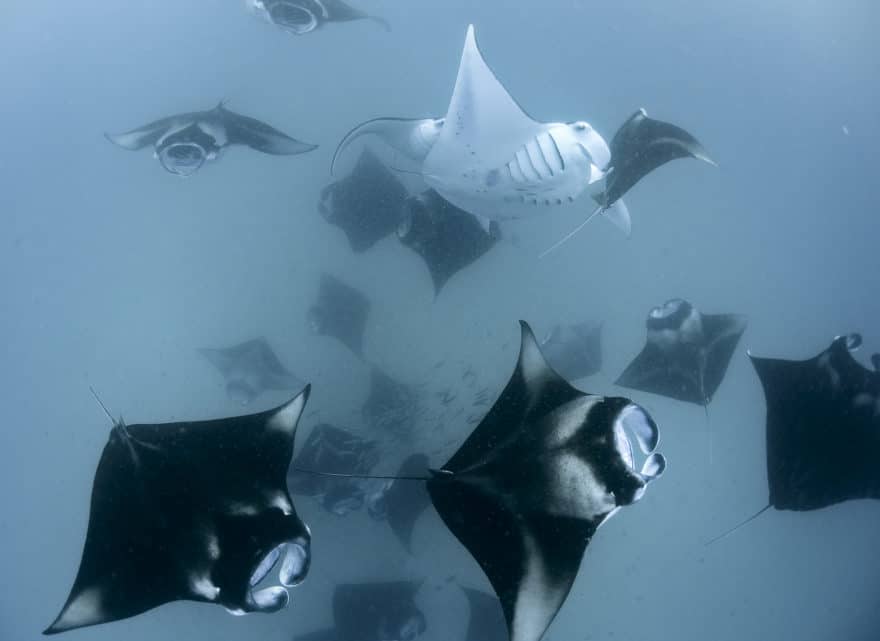Manta Rays (Mobula alfredi, formerly classified as Manta alfredi) is the second largest of all the rays. A lot of divers seem to have their go-to Manta Spot. Be it Nusa Penida in Bali, Kona Hawaii, Lankan Manta Point in the Maldives, Great Barrier Reef and many others. Along with these world-famous dive spots, Hanifaru Bay in Baa Atoll has gained immense popularity over the past several years and has become one of the stars of the Baa Atoll UNESCO Biosphere Reserve. Most Manta dives are done around cleaning stations where these enormous animals gather to get cleaned by tiny wrasses that live among the coral rock, but Hanifaru Bay is a place where Manta Rays congregate to feed, and this is quite a spectacle.
Hanifaru Bay is located on the Eastern side of Baa Atoll. The reef system of Hanifaru measures’ more than four square kilometres but the actual Bay Area is much smaller than this. Between the months of May and November, plankton in substantial quantities gets pushed inside the bay due to the combined effect of the tidal and oceanic current. The plankton becomes trapped inside the bay, and Mantas gather here in great numbers to feast. Their numbers are often in the tens and at times there can be more than 100 rays feeding in the bay, now and then along with Whale Sharks. The two gentle giants of the Maldivian waters feeding together. It is quite a feeling to float among these animals as they swim and roll around gulping the plankton-rich water.
Hanifaru Bay used to be a “free for every” dive spot, and this led to some complications due to overcrowding and such. Right now, there are management plans set in place by the Environmental Protection Agency and The Biosphere Reserve Office. Visitors to the bay get to swim among the wildlife under the watchful eye of the Rangers. Fees generated from the Hanifaru Bay trips are used to operate the Biosphere Reserve Office as well as run local community centred projects in the region. Local Islands and Liveaboards, and Resorts alternate days that they can visit the Bay. There is a set number of visitors at any given time and scuba diving in Hanifaru Bay has been banned. Not to worry as you can get a much better experience snorkeling in the lagoon, bubble-free. All visitors must be accompanied by a certified Hanifaru Guide, and they would give you a proper briefing on how to go on about with your snorkel in the bay. Flash photography is not allowed, and as with every other location in the Maldives, no wildlife should be harassed or touched.
As mentioned earlier, Hanifaru Bay is active from May to November, which is the South-West Monsoon and the period between June and October is regarded as the peak time to see the feeding frenzy. The South-West monsoon is the wet season generally, but it is not rainy throughout the whole period, and it does not rain continuously day after day. There are plenty of pleasant weather sun shining days. Usually, the Bay is more active during and around full moon days. This being said, it is a natural environment, and we cannot be 100% sure of the conditions, and whether there is a feeding frenzy taking place. However, we will check whether there are mantas around before making a trip over there from Maalhos. In the chance that Manta Rays cannot be sighted inside the bay, they can usually be seen around Hanifaru and other reefs in Baa Atoll.
For information on Maalhos Island and how to get there and for more information, please do contact us. We conduct trips to Hanifaru Bay sas well as dive trips to various other reefs around the Baa Atoll Biosphere Reserve.


Recent Comments